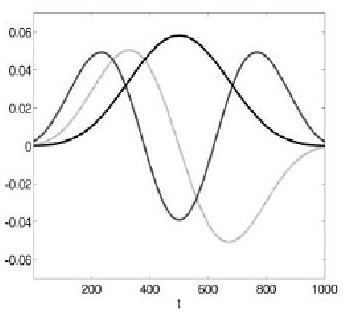 | ||
The spectral concentration problem in Fourier analysis refers to finding a time sequence whose discrete Fourier transform is maximally localized on a given frequency interval, as measured by the spectral concentration.
Contents
Spectral concentration
The discrete-time Fourier transform (DTFT) U(f) of a finite series
In the following, the sampling interval will be taken as Δt = 1, and hence the frequency interval as f ∈ [-½,½]. U(f) is a periodic function with a period 1.
For a given frequency W such that 0<W<½, the spectral concentration
It can be shown that U(f) has only isolated zeros and hence
Statement of the problem
Among all sequences
The answer is yes; such a sequence indeed exists and can be found by optimizing
subject to the constraint that the total power is fixed, say
leads to the following equation satisfied by the optimal sequence
This is an eigenvalue equation for a symmetric matrix given by
It can be shown that this matrix is positive-definite, hence all the eigenvalues of this matrix lie between 0 and 1. The largest eigenvalue of the above equation corresponds to the largest possible spectral concentration; the corresponding eigenvector is the required optimal sequence
It turns out that the number of dominant eigenvalues of the matrix M that are close to 1, corresponds to N=2WT called as Shannon number. If the eigenvalues
Not limited to time series, the spectral concentration problem can be reformulated to apply on the surface of the sphere by using spherical harmonics, for applications in geophysics and cosmology among others.
